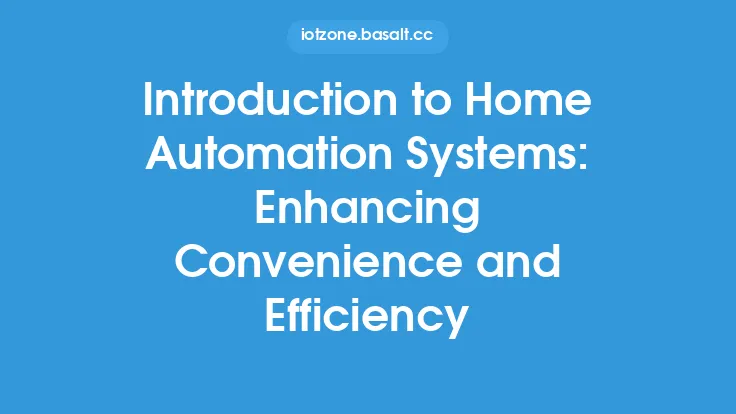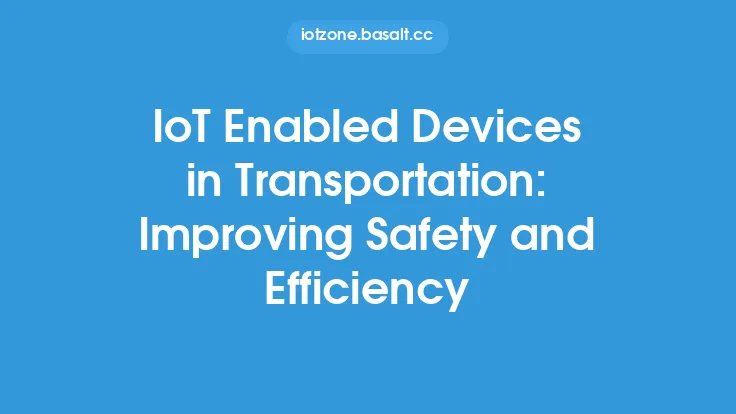The Industrial Internet of Things (IIoT) has revolutionized the way industries operate, making them more efficient, productive, and competitive. At the heart of this revolution are industrial sensors and devices, which play a crucial role in collecting and transmitting data, enabling real-time monitoring, and controlling industrial processes. In this article, we will delve into the world of industrial sensors and devices, exploring their fundamentals, importance, and applications in the context of IIoT.
What are Industrial Sensors and Devices?
Industrial sensors and devices are specialized instruments designed to measure, detect, or control physical parameters such as temperature, pressure, flow rate, level, and vibration in industrial environments. These devices are typically rugged, reliable, and accurate, capable of withstanding harsh conditions, including extreme temperatures, humidity, and exposure to chemicals or other corrosive substances. Industrial sensors and devices can be categorized into various types, including analog and digital sensors, transmitters, transducers, and actuators, each serving a specific purpose in the industrial ecosystem.
Importance of Industrial Sensors and Devices in IIoT
The importance of industrial sensors and devices in IIoT cannot be overstated. These devices are the eyes and ears of industrial operations, providing real-time data and insights that enable informed decision-making, optimize processes, and improve overall efficiency. By leveraging industrial sensors and devices, industries can achieve significant benefits, including increased productivity, reduced downtime, improved product quality, and enhanced safety. Moreover, the data collected by these devices can be used to predict maintenance needs, detect anomalies, and prevent equipment failures, leading to reduced maintenance costs and extended equipment lifespan.
Key Characteristics of Industrial Sensors and Devices
Industrial sensors and devices are designed to meet the unique demands of industrial environments. Some key characteristics of these devices include:
- Accuracy and reliability: Industrial sensors and devices must provide accurate and reliable data to ensure precise control and monitoring of industrial processes.
- Ruggedness and durability: These devices must be able to withstand harsh industrial conditions, including extreme temperatures, vibrations, and exposure to chemicals or other corrosive substances.
- Low power consumption: Many industrial sensors and devices are battery-powered or require low power consumption to minimize energy costs and reduce the carbon footprint.
- Wireless connectivity: Wireless industrial sensors and devices enable easy installation, reduced cabling costs, and increased flexibility in industrial settings.
- Interoperability: Industrial sensors and devices must be able to communicate with other devices and systems, including control systems, SCADA systems, and cloud-based platforms.
Applications of Industrial Sensors and Devices
Industrial sensors and devices have a wide range of applications across various industries, including:
- Process control: Industrial sensors and devices are used to monitor and control process parameters such as temperature, pressure, flow rate, and level in industries like oil and gas, chemical processing, and power generation.
- Predictive maintenance: These devices are used to predict maintenance needs, detect anomalies, and prevent equipment failures in industries like manufacturing, transportation, and energy.
- Quality control: Industrial sensors and devices are used to monitor product quality, detect defects, and optimize production processes in industries like food processing, pharmaceuticals, and automotive manufacturing.
- Safety and security: These devices are used to monitor and control safety and security parameters such as gas detection, fire detection, and access control in industries like oil and gas, chemical processing, and healthcare.
Industrial Sensor and Device Technologies
Industrial sensors and devices employ a range of technologies, including:
- Analog and digital sensing: Analog sensors provide continuous signals, while digital sensors provide discrete signals, enabling precise measurement and control of industrial processes.
- Wireless communication protocols: Wireless communication protocols such as Wi-Fi, Bluetooth, and Zigbee enable wireless connectivity and communication between industrial sensors and devices.
- Microelectromechanical systems (MEMS): MEMS technology enables the development of small, low-power, and low-cost industrial sensors and devices.
- Internet of Things (IoT) protocols: IoT protocols such as MQTT, CoAP, and LWM2M enable industrial sensors and devices to communicate with cloud-based platforms and other devices.
Conclusion
In conclusion, industrial sensors and devices are critical components of the Industrial Internet of Things (IIoT), enabling real-time monitoring, control, and optimization of industrial processes. By understanding the fundamentals, importance, and applications of industrial sensors and devices, industries can unlock significant benefits, including increased productivity, reduced downtime, and improved product quality. As the IIoT continues to evolve, the role of industrial sensors and devices will become even more critical, driving innovation, efficiency, and competitiveness in industries around the world.





